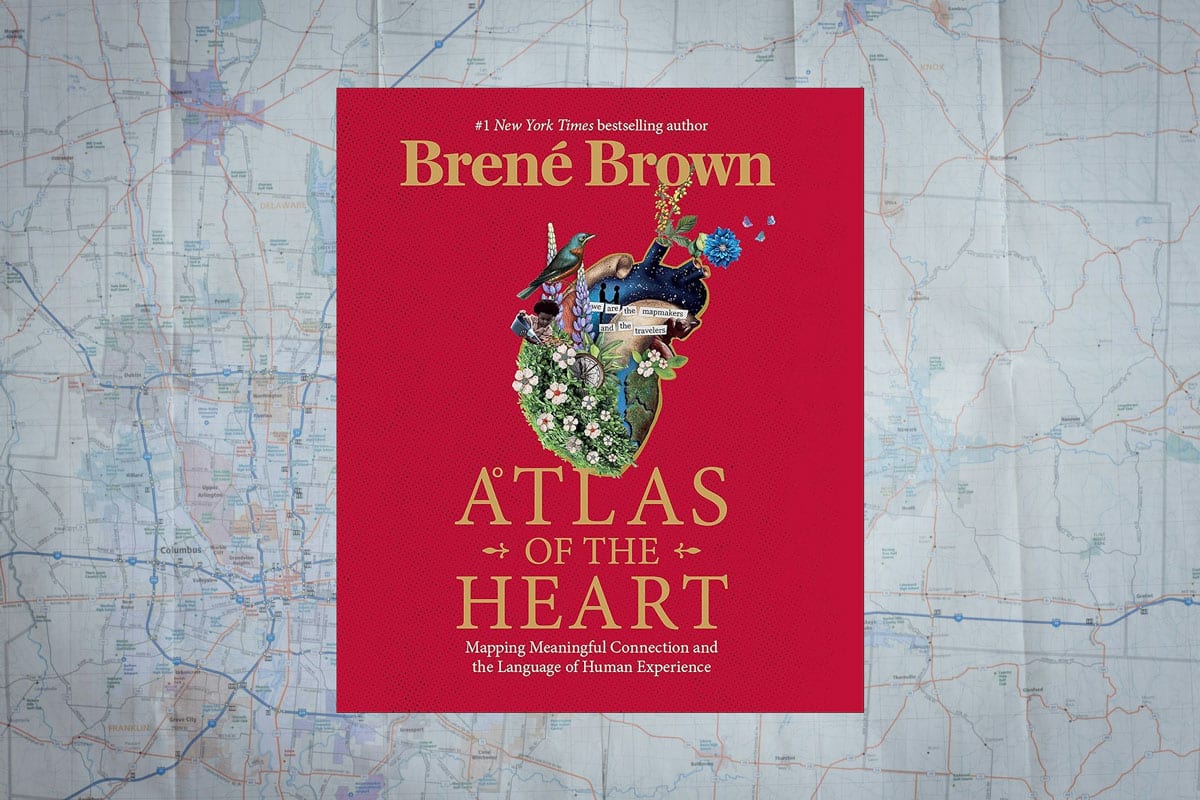Elke Hausmann is a salaried GP in Derby.
It’s been only very recently that I first came across Brené Brown — 14 years after her TED talk on vulnerability, which is still in the top 5 TED talks ever watched (66 million views and counting).1 Brown is an American social worker, academic researcher, book author, and public speaker — her prominence continues to rise, she now also has a 75-minute lecture, titled The Call to Courage, currently available to watch on Netflix.
I watched her TED talk on vulnerability and then the follow-up TED talk on shame,2 as well as the Netflix lecture, before reading this book. It is very easy to see how she has such a wide appeal — she is not afraid to give very personal examples from her own life where she has learnt something about emotions, she is humble, she is funny, and she talks about things we can all relate to — our emotional life.
“… she is not afraid to give very personal examples from her own life …”
The Atlas of the Heart is her latest book, first published in 2021. It brings together many years of empirical research on emotions, some presented in previous books, and does so around a grounded theory on cultivating meaningful connection.
Brown says herself in her last chapter that she was surprised how important the language of emotions became to her model of cultivating meaningful connection, ‘Knowing and applying the language of human experience and emotion is a key property of all the major categories that support meaningful connection’ (p.273).
She also learnt that ‘our connection with others can only be as deep as our connection with ourselves’ (p.272). If our language of emotions is impoverished (not much beyond ‘happy, sad, and pissed off’ [p.221]), we will have a poorer understanding of our own emotions and the emotions of others, as well as what those emotions do or conceal. This book rectifies that.
There is much in this book that will resonate with many aspects of any reader’s personal life. Much of our emotional life is unexamined, we think we know what certain emotions are, and it is exciting to learn that we may have been wrong about much of it, as was Brown when she learned from empirical study that many of her deeply held beliefs about certain emotions were wrong.
The chapters cluster around groups of emotions. One example that is particularly relevant for any GP’s working life is chapter 7: ‘Places We Go with Others: Compassion, Pity, Empathy, Sympathy, Boundaries, Comparative Suffering’. Working with people, emotions will always play a role. Patients may bring and sometimes act out their emotions, we are meant to remain ‘professional’. In our training we learn about the concept of ’empathy’, as it’s now accepted that consultations are not just transactional, but that emotions are part of them, including those of the doctor. To cultivate the right amount of human connection and professional distance is not always easy.
I found this chapter really useful for deepening my understanding of the different ways we may relate to our patients. Here are a few examples:
“If you only ever read one book about emotions, make it this one.”
‘Empathy is a tool of compassion […] [cognitive empathy] is understanding what someone is feeling, not feeling it for them. […] Affective empathy, feeling something along with the person who is struggling, is a slippery slope towards becoming overwhelmed and not being able to offer meaningful support.’ (p.122)
In order to have empathy, we don’t need to have been through exactly what our patients have been through, we just need to have experienced the same emotions so we can relate: ‘Empathy is not relating to an experience, it’s connecting to what someone is feeling about an experience’ (p.125).
She talks about ‘near enemies’ — ‘near enemies are states that appear similar to the desired quality but actually undermine it. Far enemies are the opposite of what we are trying to achieve’ (p.252).
A near enemy of empathy is sympathy: ‘rather than conveying the powerful “me too” of empathy, it communicates “not me”, then adds, “But I feel sorry for you”. Sympathy can even be a trigger for shame […] Sympathy and pity are first cousins: We feel bad for you. From way over here where the kind of misery you’re experiencing doesn’t happen […] Rather than walking in your shoes, I need to learn how to listen to the story about what it’s like in your shoes and believe you even when it doesn’t match my experience.’ (p.124–125)
“If all children would grow up learning the lessons of this book, the world would be a different place.”
There are 14 chapters in this book that explore the whole range of human emotions, from shame to anger, love to joy, pride to envy, and many more. It will take you on a journey of exploration of our inner world and its consequences in the way we act in our lives, whether they be our personal or our professional lives, as well as wider society (you’ll have a much better handle on much of our current politics and other aspects of contemporary life like social media as well). No topic is off limits for her; as a Christian she writes:
‘I define spirituality as the deeply held belief that we are inextricably connected to each other by something greater than ourselves. I have friends who are atheists who every day practice inextricable connection – they hurt when others hurt and they know that none of us are free until all of us are free. I have friends who talk endlessly about their religion and wear scripture on their T-shirts, yet demonstrate no connection to anyone’s suffering but their own and maybe that of the people in their immediate circle. I make this point because we’re not talking about religion here. We’re talking about the irrepressible human spirit.’ (p.252–253)
Brown has a very clear writing style with a lot of humour, and everything she writes about has an empirical foundation. If you only ever read one book about emotions, make it this one. If all children would grow up learning the lessons of this book, the world would be a different place.
Featured book: Brené Brown, Atlas of the Heart: Mapping Meaningful Connection and the Language of Human Experience, Vermilion, 2021, HB, 336pp, £20.23, 978-1785043772
References
1. Brown B. The power of vulnerability. 2010. https://www.ted.com/talks/brene_brown_the_power_of_vulnerability?subtitle=en (accessed 12 Nov 2024).
2. Brown B. Listening to shame. 2012. https://www.ted.com/talks/brene_brown_listening_to_shame?subtitle=en (accessed 12 Nov 2024).
Featured photo by Alex Grodkiewicz on Unsplash.






